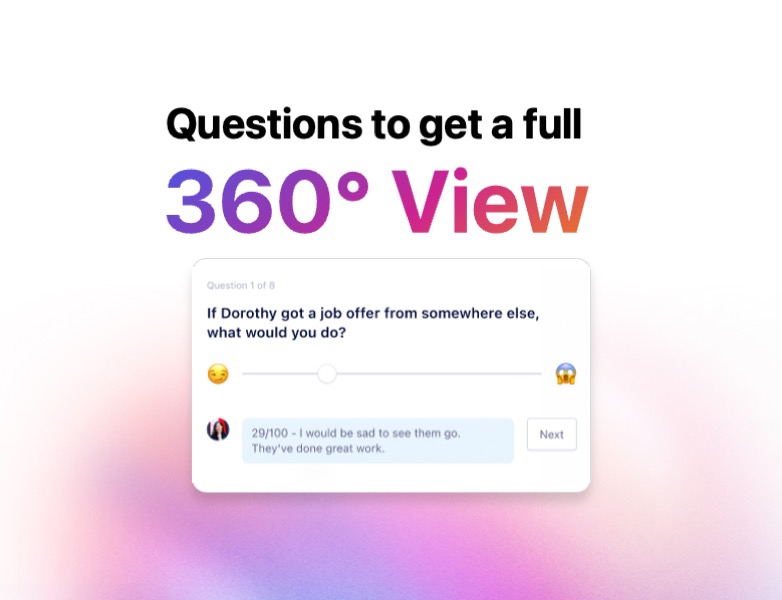5 ways to prepare for a difficult conversation with an employee
3 min read
This article is based on research from our Ultimate guide to having difficult conversations with employees.
One of the easiest ways to screw up a difficult conversation? Not preparing.
After all, when you’re having a difficult conversation with zero prep work, you’re taking a lot of risks. You risk fracturing your employee’s trust through inaccurate details, inappropriate language or simply a lack of understanding. You risk walking away from the conversation with little or no change made. You risk losing that employee altogether.
It’s not worth it. To quote Michael Lopp, don’t YOLO hard conversations.
Here are five ways to prepare for a difficult conversation with an employee:
1. Get the facts 🕵️♂️
Here’s where you can channel your inner Sherlock Holmes: get all the facts you might need to support your feedback or explain any key details to your employee.
Pull up any key metrics/dates/incidents related to your conversation, and review the details. If you have any questions (aside from what you’ll ask the employee), try to get answers beforehand. This is also a good time to review any relevant company policies or rules that pertain to the situation, or bring your HR team into the conversation.
2. Step into their shoes 👞
Once you have all the info, take a moment to try to see the situation from all angles – including your employee’s. Depending on the situation, it might feel difficult not to jump to conclusions, but you need to try to take an objective approach.
Don’t make any definitive assumptions, but push your brain to go beyond your own thinking.
3. Acknowledge – and remove – any emotions 😡
You’re human. You probably have associated some emotions with this situation. Are you angry? Disappointed? Worried? Upset? Really try to dig deep to see what you’re feeling. It’s a lot easier to work through those emotions now versus when you’re sitting in a room with your employee.
Once you’ve spent some time with those feelings, push them aside. Bringing them into the conversation will only make things worse. Your strong emotions could make your employee feel cornered, or that you’re not taking a fair and objective view of the situation. Going in emotional could also cause you to say or do things you’d regret later – you’re much better off working through those feeling beforehand.
4. Think about possible solutions 🤔
You don’t want to put a full action plan in place before talking to your employee – after all, you haven’t heard their side of the situation. However, even though it can’t be finalized without the conversation happening, it’s worthwhile to think about what you’d like the solution or outcome to be.
What are you hoping to achieve from this conversation? Are there any actions that must be taken? What might be a win-win solution?
Thinking about these potential action items ahead of time will help guide the conversation and also push the conversation toward a more constructive conclusion.
5. Create an objective statement 📝
Once you’ve gone through all the above steps, it’s time to distill your objective down to one sentence for clarity. This may or may not be something that you actually say in in the meeting – and these details could change considerably once you hear the employee’s point of view. But even just the act of creating an objective statement will help you to fine-tune your plan for the conversation.
When you’re creating your objective statement, try to break the sentence down into three parts: what seems to be happening, how it’s impacting the team and what you’d like to achieve.
There’s so much more that goes into preparing for a difficult conversation – like thinking about the meeting logistics, for example! For more tips and checklists, read our Ultimate guide to having difficult conversations with employees.


